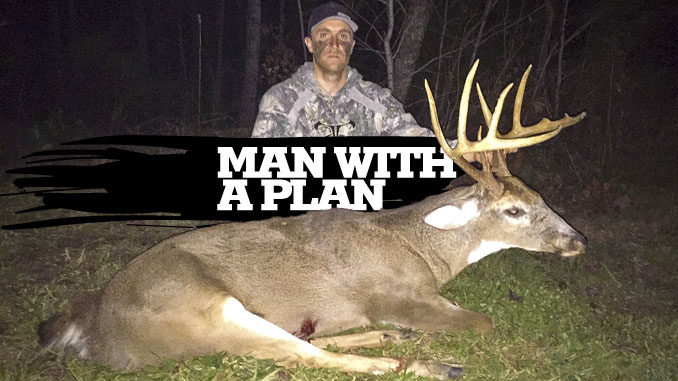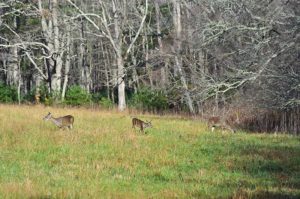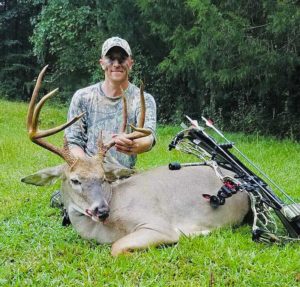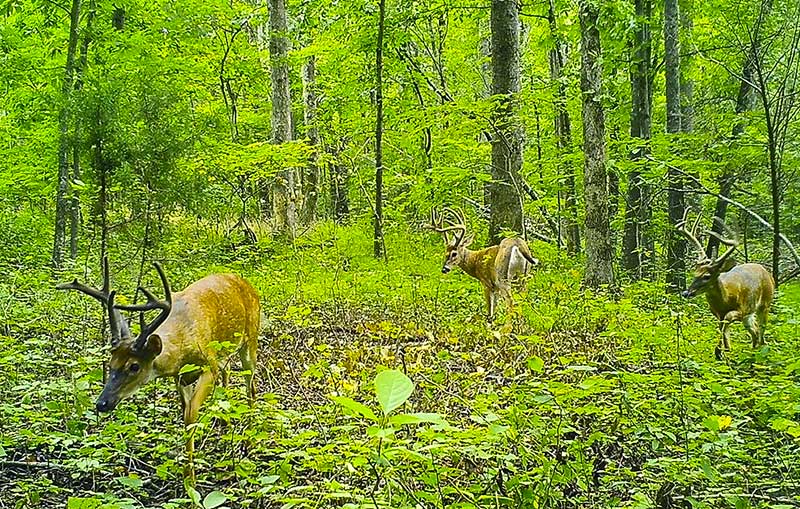
Set harvest goals long before opening day of deer season arrives. Learn what factors should be part of your decision.
Hunting is a popular outdoor sport in the United States.
While many of the winged variants are quite popular across the country, the white-tailed deer overwhelmingly interests hunters more than any other furred or feathered creature.
Hunters in the Carolinas are no different.
Deer are a highly sought-after game animal here. And with deer season on the horizon, hunters mindful of management objectives should develop a harvest plan long before the first few minutes of shooting light arrives.

Managing deer is something that begins on a state level, trickling down to the tract level. States’ wildlife agencies must track population trends, hunter satisfaction and herd stability in order to make recommendations for bag limits and seasonal opening and closures. Hunters obviously need plenty of deer to hunt. But a combination of a healthy deer population and suitable habitat is mandatory to support a healthy balance. State agencies monitor wildlife populations in order to sustain a healthy and harvestable population of animals.
Typically, regulations are most-often geared towards population sustainability, with a reasonable emphasis on sex ratio, which is primarily monitored for population control. Hunters on the local level are more apt to control their resident populations to produce bigger and better deer, preferably heavy bucks with oversized antlers.
Several factors play a role in managing for trophy bucks
The recipe for a trophy buck has three ingredients: supreme nutrition, adequate genetics and maturity. Land managers can improve habitat and provide supplemental nutrients to improve a buck’s dietary intake. Genetics is something that is difficult to fully control. But maturity is the easiest aspect to manage. The greatest impact hunters can have on a deer population is through their trigger fingers.
Harvesting deer can directly impact the sex ratio, age structure and overall population of animals on the farm. And harvesting indirectly affects the quality and abundance of habitat, including food and cover that is a critical segment of the management system.

R.J. Seiler, from Stokesdale, N.C., is not new to deer hunting or to taking mature bucks. He has hunted deer for 27 years. But he didn’t start incorporating management tactics until 10 years ago on his land in Rockingham County, one of North Carolina’s top trophy producing counties.
“A few years after I put management practices into effect, I consistently started killing bucks in the mid-130s or better as a result,” Seiler said. “My best deer is a 155-inch, main-frame 8-pointer with six kickers from 2015 that I killed with my bow.”
Be selective in your harvests
Seiler maintains mineral sites and quality food plots of clover and oats across his properties. And he limits the number of bucks he takes by the state-mandated limit of two. But before he releases on a buck, it must meet his maturity level.
“I try not to shoot a buck unless he’s at least 4 1/2 years old, with at least 8 points and at least 160 pounds live weight,” he said. “I look for a sagging belly, loose brisket, roman nose and other features characteristic of a mature deer. And I definitely try to leave the 2 1/2- to 3 1/2-year-old bucks alone to see what they turn into.”
Charles Ruth, the deer-project supervisor for the S.C. Department of Natural Resources, agrees with Seiler’s sentiment. According to Ruth, adult bucks 2 1/2 years and older are mostly considered residents of a specified home range. They will not generally leave that range except for a brief episode during the rut.
“The use areas within a deer’s home range will vary seasonally. And it is typically the largest during the breeding season,” Ruth said. “(However) bucks will take an excursion when they temporarily leave their established home ranges during the breeding season.
“With the exception of some of the yearlings that disperse 2 to 5 miles away from their birth area, adult bucks that show up on cameras in the summer are likely residents. And they will almost certainly be there the next year if they survive.”
Let ’em go, let ’em grow
There are no guarantees yearling bucks will remain on the property for the next season. But bucks 2 1/2 years and older that show up on camera in summer are highly likely to remain on the property, if not killed during their brief excursions to other areas. Passing up 2 1/2- and 3 1/2-year-old bucks can be a beneficial management tool for hunters looking to maximize their opportunity to shoot a trophy buck.

Seiler hunts approximately 500 acres on eight different properties. Because North Carolina allows hunters to take two bucks, many of the bucks on his properties get a pass and get the opportunity to grow and mature. Regardless of how big a buck’s antlers measure out to be, allowing bucks to reach 4 1/2 years of age will guarantee a mature animal. Passing up subordinate bucks can be a real bonus for growing trophy bucks ready for harvest the next year.
Trail cameras help hunters reach their harvest goals
“In a great year, I’ll get to fill both buck tags with mature deer. And sometimes, it may even happen on the same property. I am OK with that, because they are tough to kill as it is,” he said.
Seiler runs multiple trail cameras on each property before the season to develop a hit list based on the two most-mature bucks on his eight properties. Preseason camera surveys are a critical component to developing harvest plans for the season and should be part of every hunter’s preseason planning activities.
In both Carolinas, buck and doe tags provide a method to control harvests by sex and quantity. But most hunters will fine-tune their harvest selections based on a more-specific guideline, whether by antler size, antler configuration, and the approximate age of deer.
If hunters want to take more deer to the taxidermist, a management directive should be developed and carried out to reach those objectives before the season arrives.




Be the first to comment